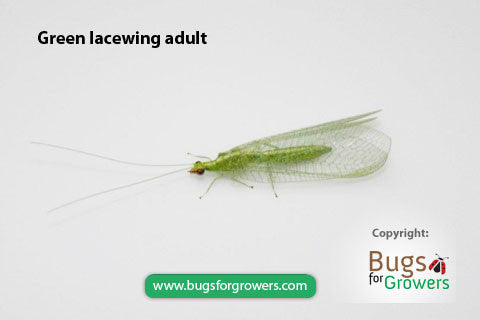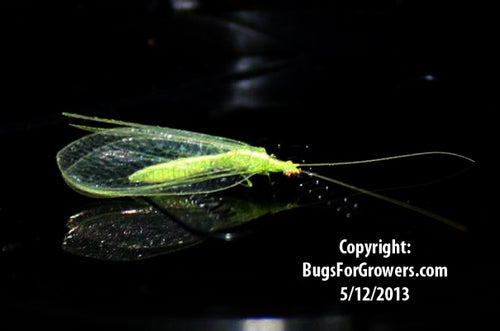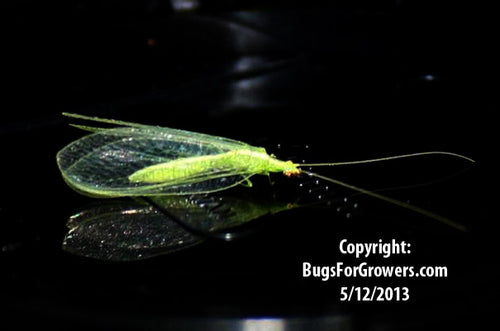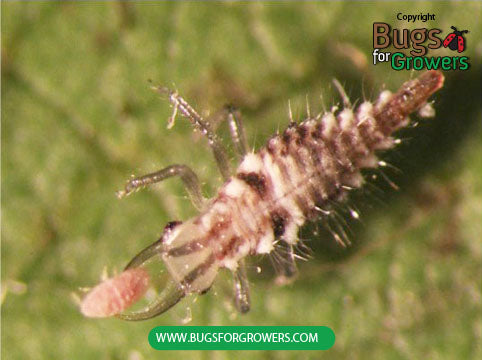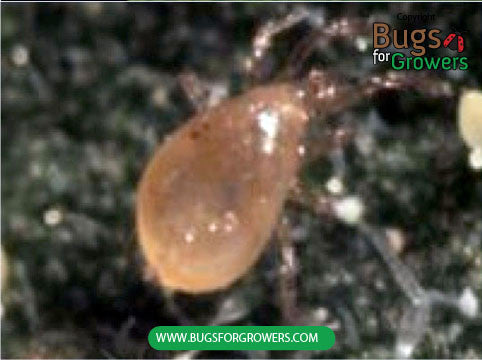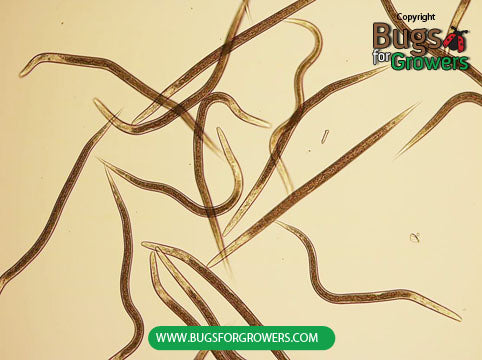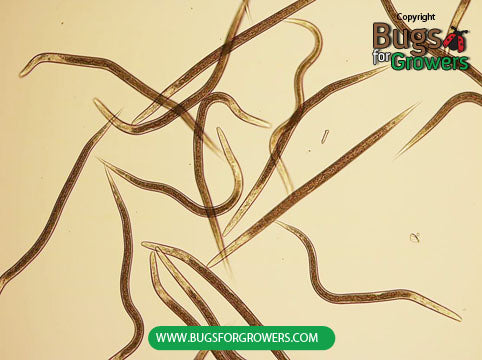Whiteflies
What are Whiteflies?
The adult whiteflies are about 2-3 mm long tiny insects that belong to only family Aleyrodidae in the order Hemiptera in the class Insecta. As other hemipterous bugs, whiteflies also have piercing and sucking types of mouth parts that they use for sucking cell sap (juice) from the plants. So far there are more than 1500 whitefly species have been described and all of them are known to cause serious economic damage to various vegetables, ornamental plants and fruits and field crops. The whiteflies have yellowish body with white colored wings. The white color of wings is mainly due to the natural coating of the white colored powdery wax. In addition to the white color of wings, some species of whiteflies have characteristic markings on their wings. Whiteflies develop through four nymphal (larval) stages (instars), which are wingless and generally flattened, pale to translucent in color.
Facts (show all)
- List of the most economically devastating species of Whiteflies
-
- Ash whitefly, Siphoninus phillyreae
- Banded wing whitefly, Trialeurodes abutiloneus
- Citrus whitefly, Dialeurodes citri
- Cloudy-winged whitefly, Dialeurodes citrifolii
- Crown whitefly, Aleuroplatus coronate
- Giant whitefly, Aleurodicus dugesii
- Greenhouse whitefly, Trialeurodes vaporariorum
- Iris whitefly, Aleyrodes spiraeoides
- Mulberry whitefly, Tetraleurodes mori
- Rhododendron whitefly, Massilieurodes chittendeni
- Silver leaf whitefly, Bemisia argentifolii
- Sweet potato whitefly, Bemisia tabaci
- Woolly whitefly, Aleurothrixus floccosus
- Biology of whiteflies
-
Adult whiteflies generally gather on the underside of the leaves where they mate and their females generally lay over 200 eggs in circular rows. Eggs hatch within a week into pale to translucent colored nymphs (larvae) that develop through four stages (instars). Of these four stages, the first immature nymph stages are the only mobile stages are called as ‘crawlers’ because they have well developed legs and antenna for moving and locating the permanent feeding sites on the underside of leaves, respectively. After first molt, nymphs enter into second stage, loose their legs and become immobile. These legless nymphs then attach to the selected feeding site on the leaves by inserting their mouth parts into leaf tissue where they feed continuously for about 3-4 weeks. While feeding, these nymphs molt twice into third and fourth stages (instars) and then form the pupae. After 7-10 days, adult whiteflies emerge from pupae and life cycle continues. Although adult white flies live for a month, there are several overlapping generations have been reported.
- What type of damage is caused by whiteflies?
-
Whiteflies cause both direct and indirect damage to their host plants. In case of direct damage, both adult and nymphal stages use their piercing and sucking types of mouth parts to suck cell sap (juice) from underside of leaves of their host plants. Heavy feeding by both adults and nymphs can cause yellowing of leaves that eventually dry and fall off prematurely from the plant. Also, the voracious feeding by the high populations of whiteflies can seriously weaken plant growth and eventually whole plant will die prematurely. In case of indirect damage, whiteflies during feeding also secrete honeydew that stimulates the growth of black sooty mold on the surface of leaves. This black sooty mold generally covers whole leaf area and badly affects the photosynthesis, a process used by plants to convert light energy from sun to chemical energy for the synthesis of their own food including carbohydrates and proteins. This black sooty mold also reduces the quality of the produce and aesthetic value of many ornamental plants. In addition, whiteflies are known to transmit different types of disease causing plant viruses that may be responsible for tremendous economic loss to the agricultural, horticultural and greenhouse industries.
- Which Viruses are transmitted by whiteflies?
-
According to Jones (2003), whiteflies transmit 114 species of viruses to different species of plants. Among several different whitefly genera, only two genera including Bemisia and Trialeurodes are known vectors of viruses (Jones, 2003). Following is list of a few important viruses that are transmitted to various crops/plants by whiteflies.
- Abutilon yellows virus
- Beet pseudo yellows virus
- Cotton leaf crumple virus
- Cucurbit leaf crumple virus
- Cucurbit yellow stunting disorder virus
- Ipomoea leaf curl virus
- Ipomovirus Sweet potato mild mottle virus
- Lettuce chlorosis virus
- Lettuce infectious yellows virus
- Squash leaf curl virus
- Strawberry pallidosis associated virus
- Sweet potato chlorotic stunt
- Sweet potato leaf curl virus
- Sweet potato sunken vein virus
- Tomato apex necrosis virus
- Tomato chlorosis virus
- Tomato infectious chlorosis virus
- Tomato yellow leaf curl virus
- Biological control of whiteflies
-
Use of chemical pesticides is not allowed in organic productions due to their detrimental effects on humans, animals and environment. Therefore, control of whiteflies with beneficial insect is essential to reduce the crop losses caused by whiteflies in the organic productions. There are several natural enemies including big-eyed bugs, damsel bugs, green lacewings, ladybug beetles, pirate bugs and spiders are known to feed on whiteflies. The low populations of these naturally occurring enemies in your organic gardens can be supplemented by buying and releasing commercially available biological control agents. Below is the list of beneficial predatory and parasitic biological control agents that can be commercially obtained and released in your garden for the successful management of whiteflies.
- Predatory beneficial insects
-
- Green lacewings, Chrysoperla rufilabris
- Predatory mite, Amblyseius swirskii
- Whitefly predatory ladybug beetle, Delphastus cataliniae
- Parasitic beneficial insects
-
- Parasitic wasp, Encarsia Formosa
- Parasitic wasp, Eretmocerus eremicus
- Parasitic beneficial entomopathogenic nematodes
-
- Steinernema carpocapsae nematodes
- Steinernema feltiae nematodes
- Research Papers
-
Arno, J., Albajes, R. and Gabarra, R. 2006. Within-plant distribution and sampling of single and mixed infestations of Bemisia tabaci and Trialeurodes vaporariorum (Homoptera : Aleyrodidae) in winter tomato crops. Journal of Economic Entomology 99: 331-340.
Barajas-Ortiz, M., Leon-Sicairos, C. R., Lopez-Valenzuela, J. A., Reyes-Moreno, C., Valdez-Ortiz, A., Velarde-Felix, S., Peraza-Garay, F. and Garzon-Tiznado, J. A. 2013. Transmission Efficiency of Tomato Apex Necrosis Virus by Bemisia tabaci (Hemiptera: Aleyrodidae) Biotype B in Tomato. Journal of Economic Entomology 106: 1559-1565.
Berndt, O. and Meyhofer, R. 2008. Whitefly control in cut gerbera: is it possible to control Trialeurodes vaporariorum with Encarsia formosa? Biocontrol 53: 751-762.
Cuthbertson, A.G.S., Blackburn, L.F., Eyre, D.P., Cannon, R.J.C., Miller, J. and Northing, P. 2011. Bemisia tabaci: The current situation in the UK and the prospect of developing strategies for eradication using entomopathogens. Insect Science 18: 1-10.
Cuthbertson, A.G.S., Mathers, J.J., Northing, P., Prickett, A.J. and Walters, K.F.A. 2008. The integrated use of chemical insecticides and the entomopathogenic nematode, Steinernema carpocapsae (Nematoda: Steinernematidae), for the control of sweetpotato whitefly, Bemisia tabaci (Hemiptera: Aleyrodidae). Insect Science 15: 447-453.
Gelman, D.B., Gerling, D., Blackburn, M.B. and Hu, J.S. 2005. Host-parasite interactions between whiteflies and their parasitoids. Archives of Insect Biochemistry and Physiology 60: 209-222.
Gerling, D., Alomar Ò. And Arnòb, J. 2001. Biological control of Bemisia tabaci using predators and parasitoids. Crop Protection 20: 779-799.
Head J., Lawrence A.J. and Walters K.F.A. 2004. Efficacy of the entomopathogenic nematode, Steinernema feltiae against Bemisia tabaci in relation to plant species, Journal of Applied Entomology. 128:543–547.
Jones, D. R. 2003. Plant viruses transmitted by whiteflies. European Journal of Plant Pathology 109: 195- 219.
Laznik, Z., Znidarcic, D. and Trdan, S. 2011. Control of Trialeurodes vaporariorum (Westwood) adults on glasshouse-grown cucumbers in four different growth substrates: an efficacy comparison of foliar application of Steinernema feltiae (Filipjev) and spraying with thiamethoxamn. Turkish Journal of Agriculture and Forestry 35: 631-640.
Shrestha, Y.K. and Lee, K.Y. 2012. Oral toxicity of Photorhabdus culture media on gene expression of the adult sweetpotato whitefly, Bemisia tabaci. Journal of Invertebrate Pathology 109: 91-96.
van Lenteren, J.C. and Manzaroli, G. 2002. Evaluation and use of Predators and Parasitoids for Biological Control of Pests in Greenhouses. Integrated Pest and Disease Management in Greenhouse Crops Developments in Plant Pathology 14: 183-201.


